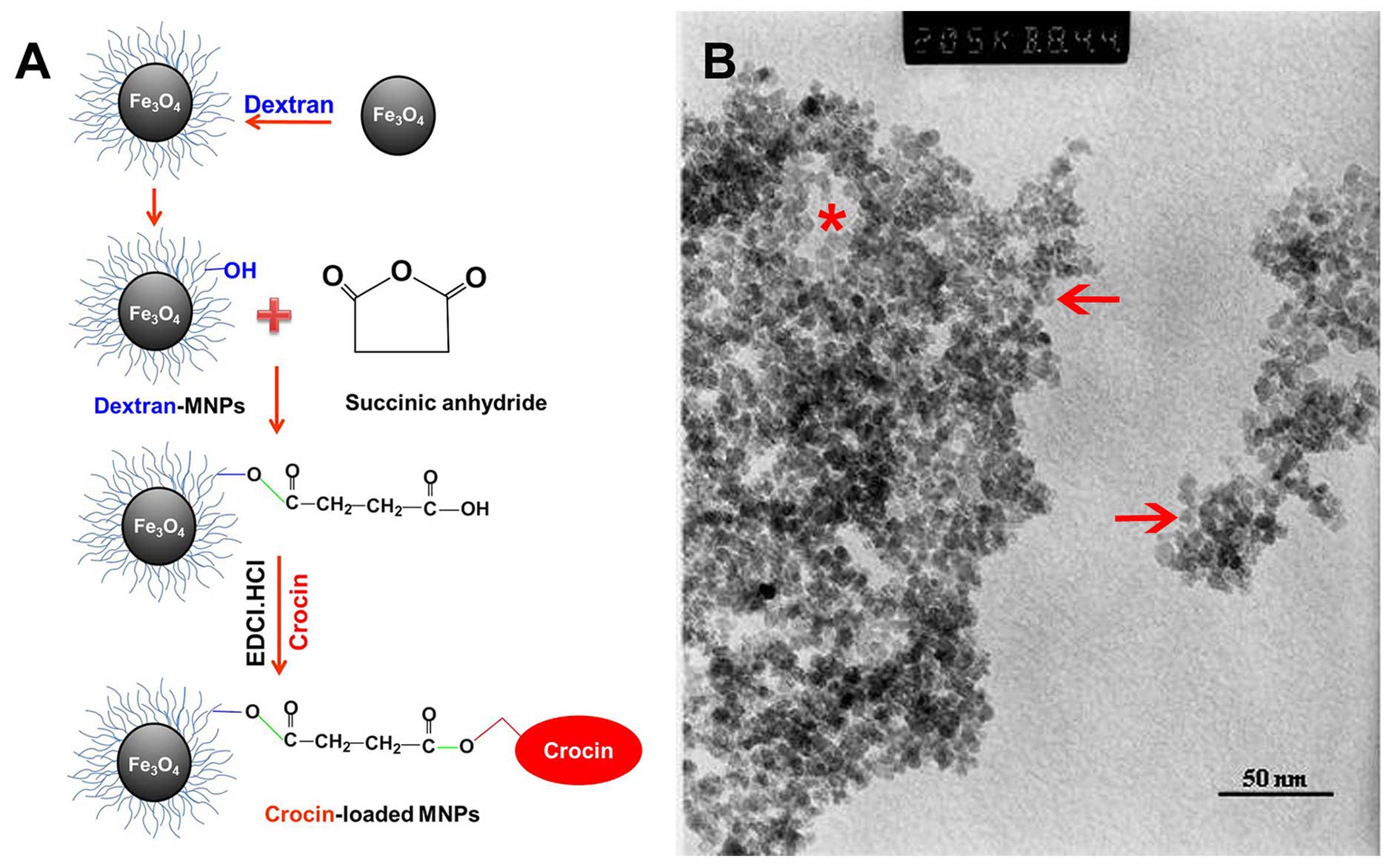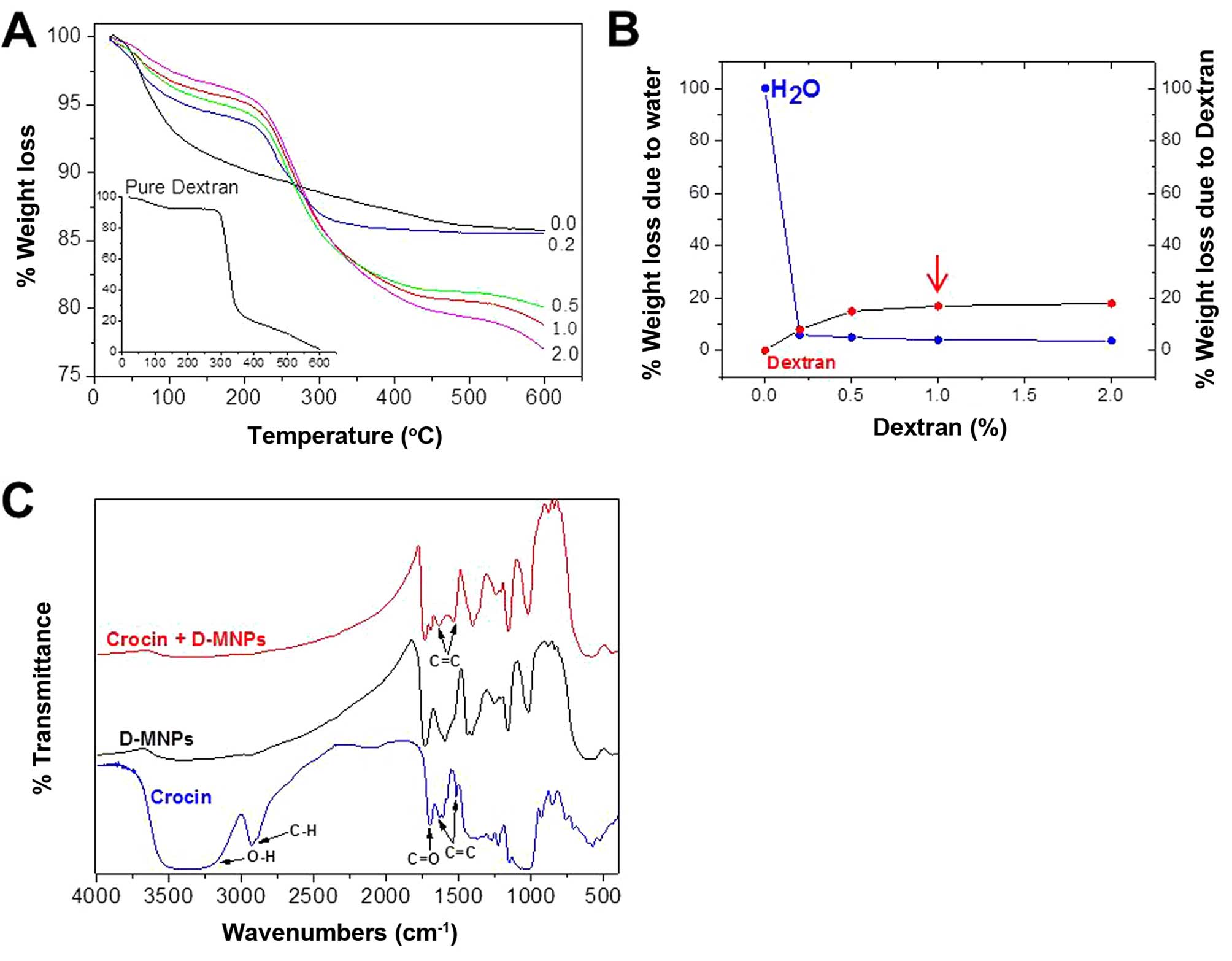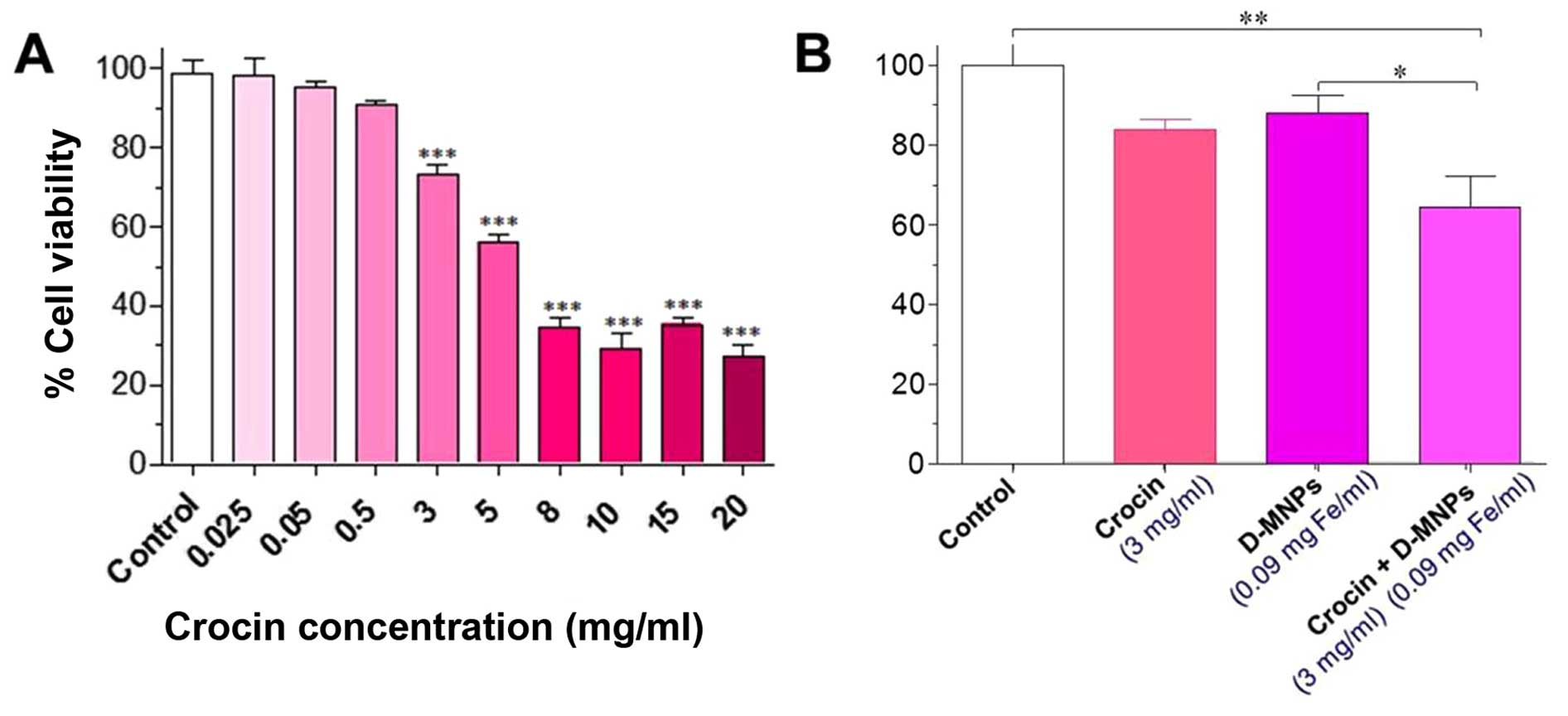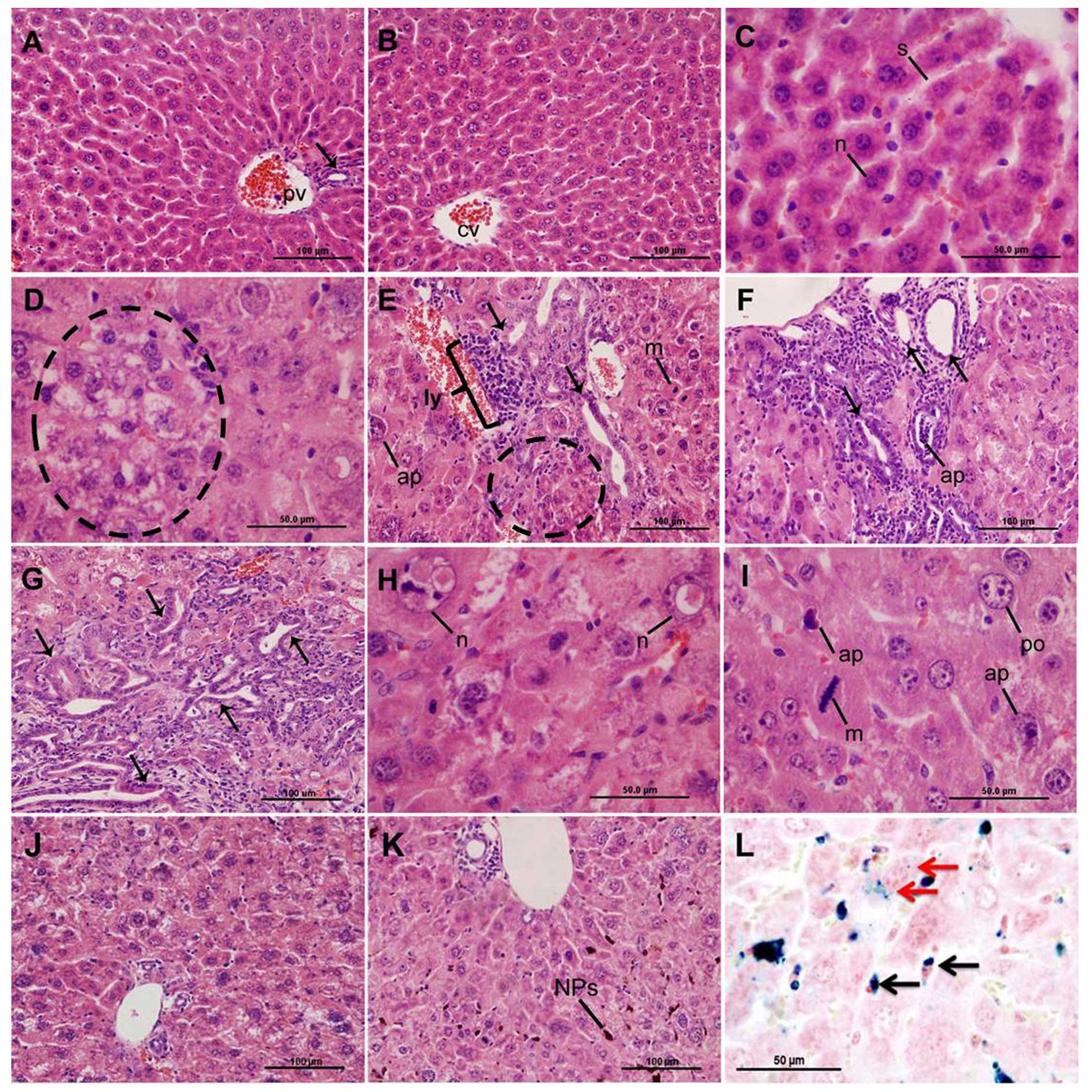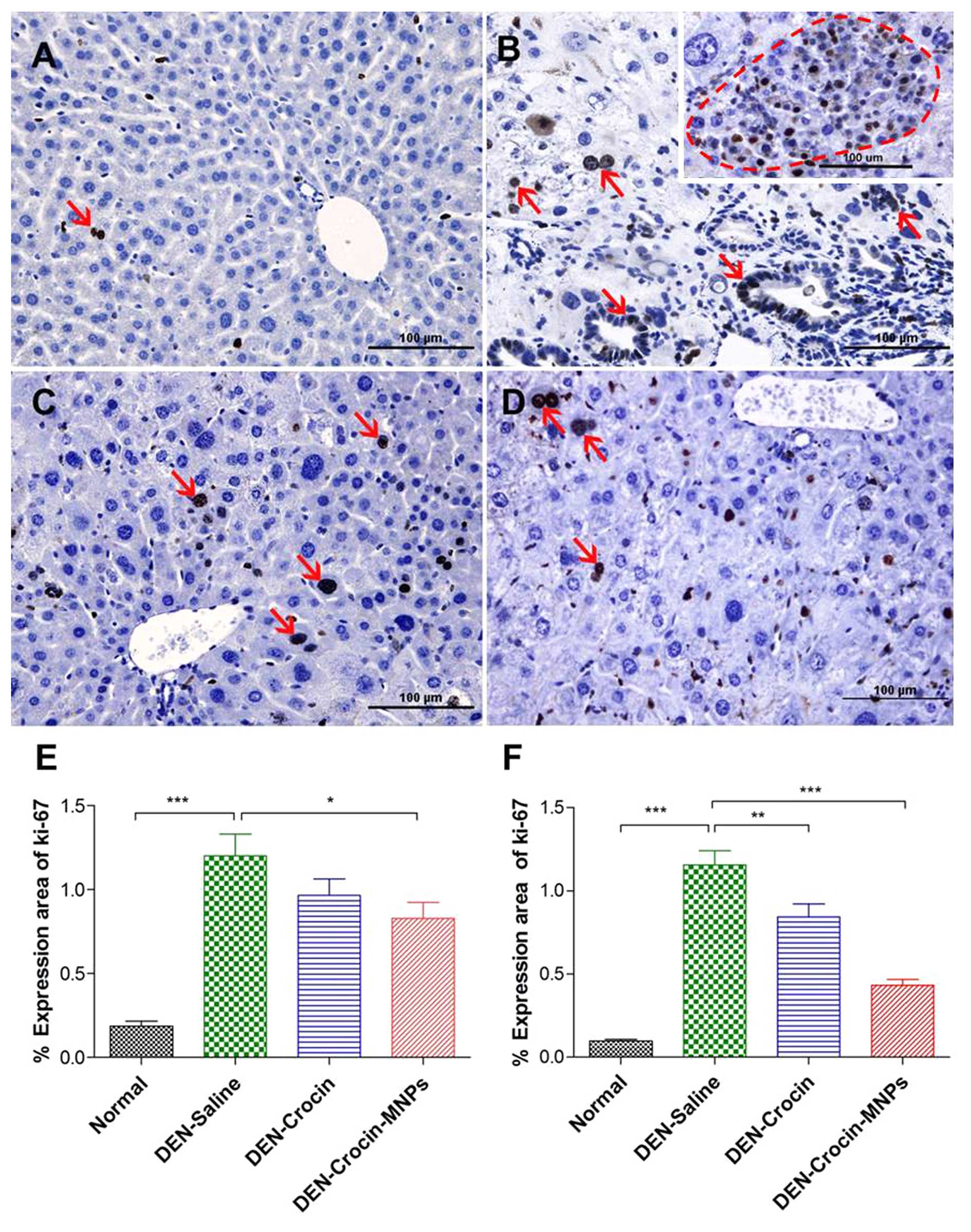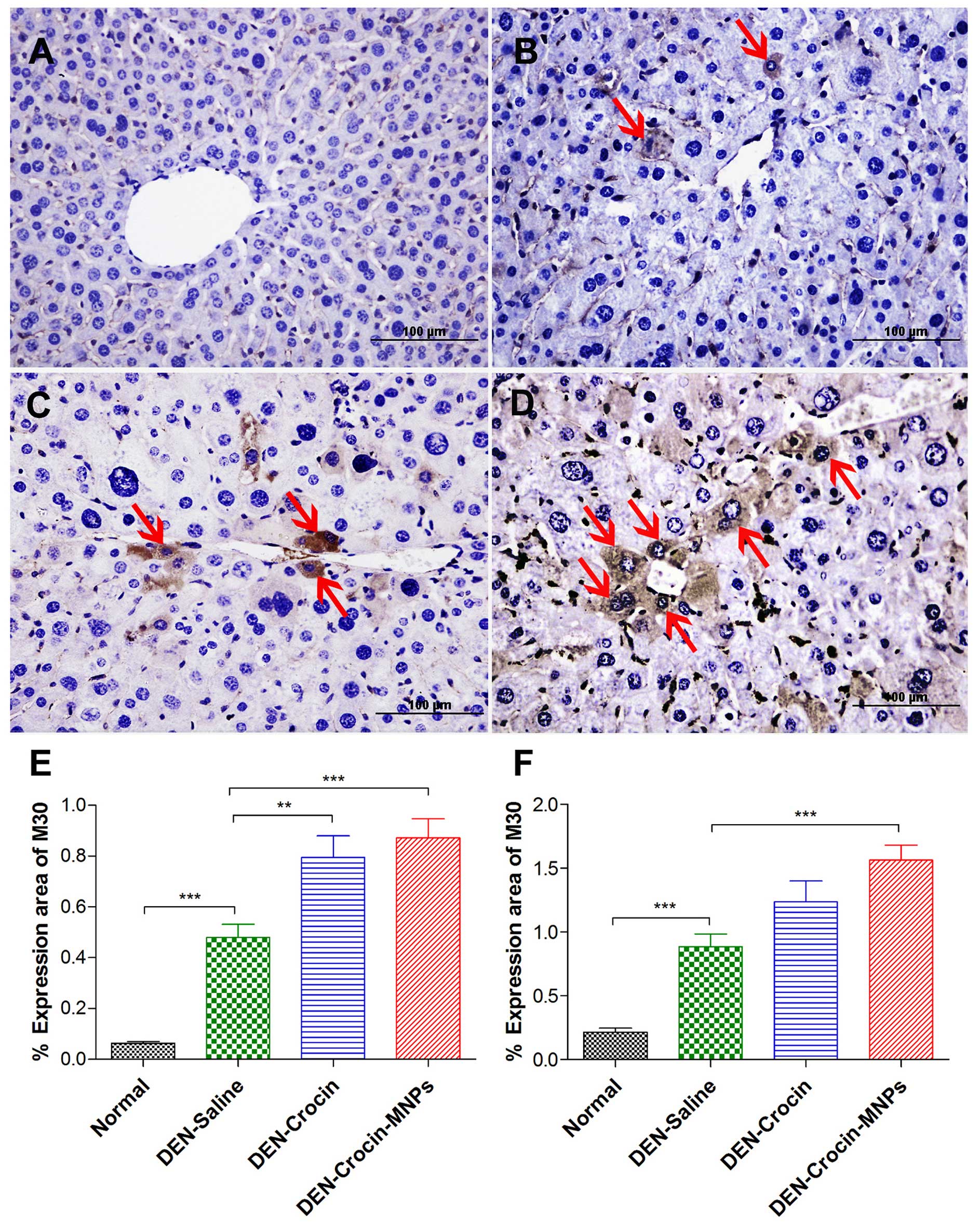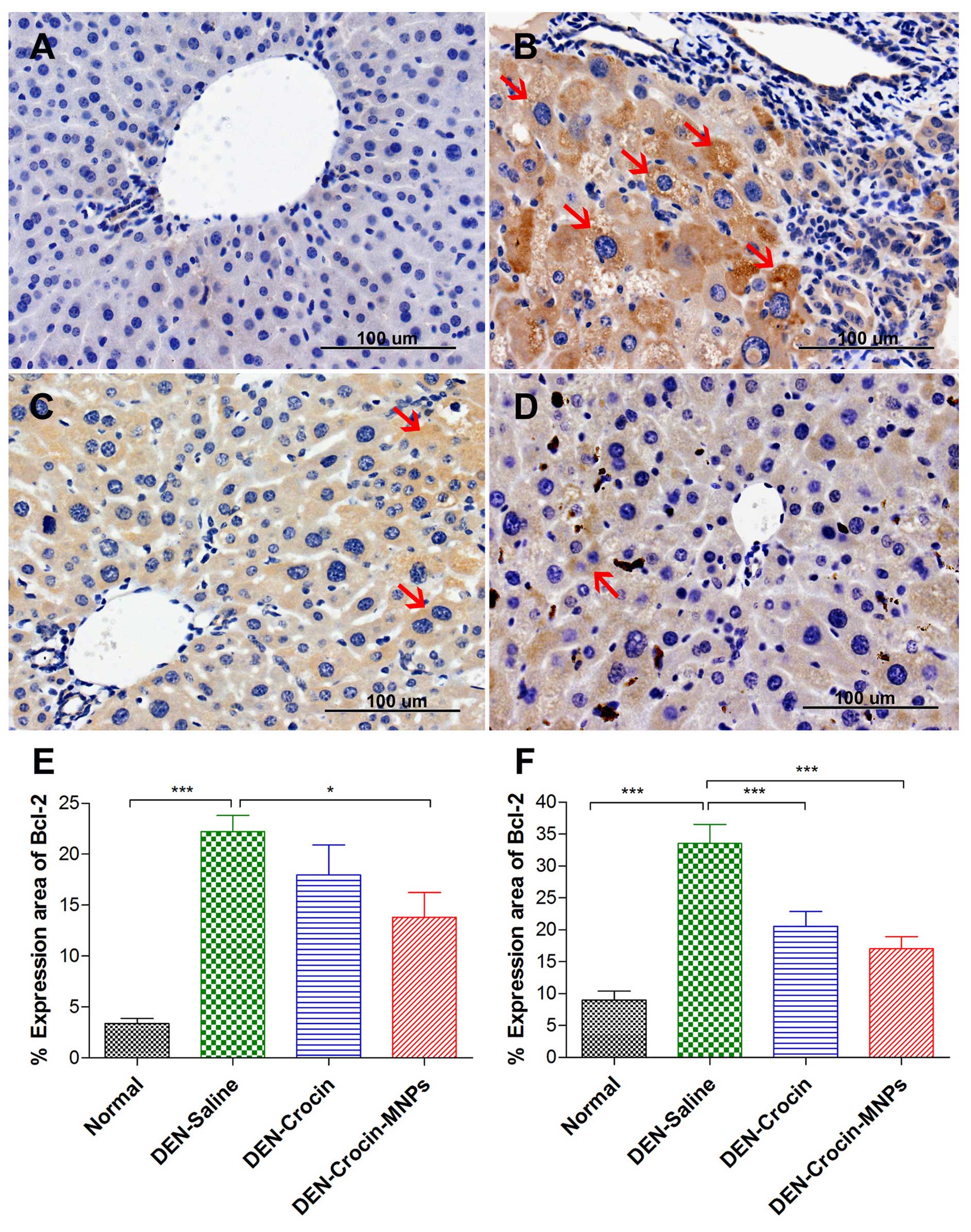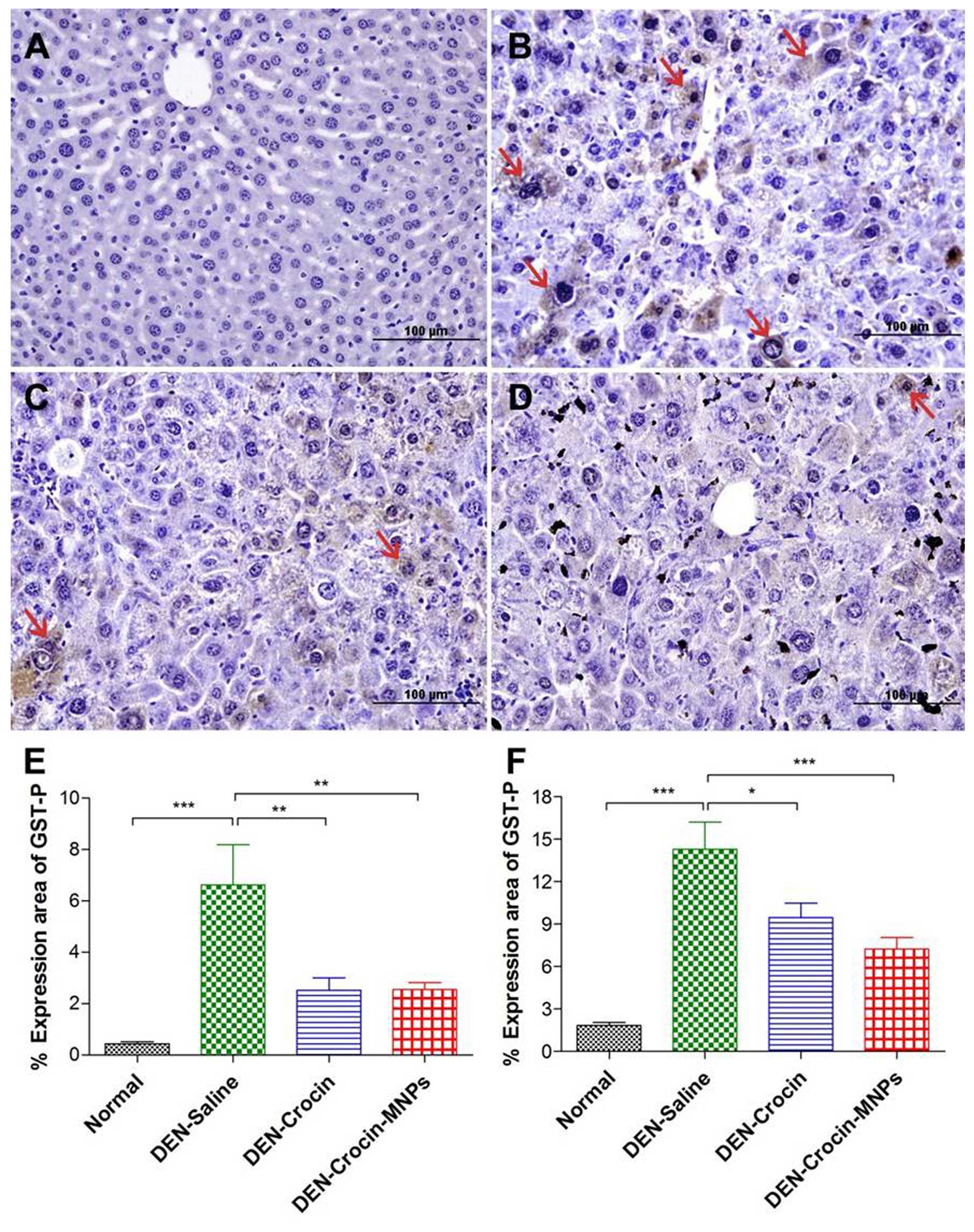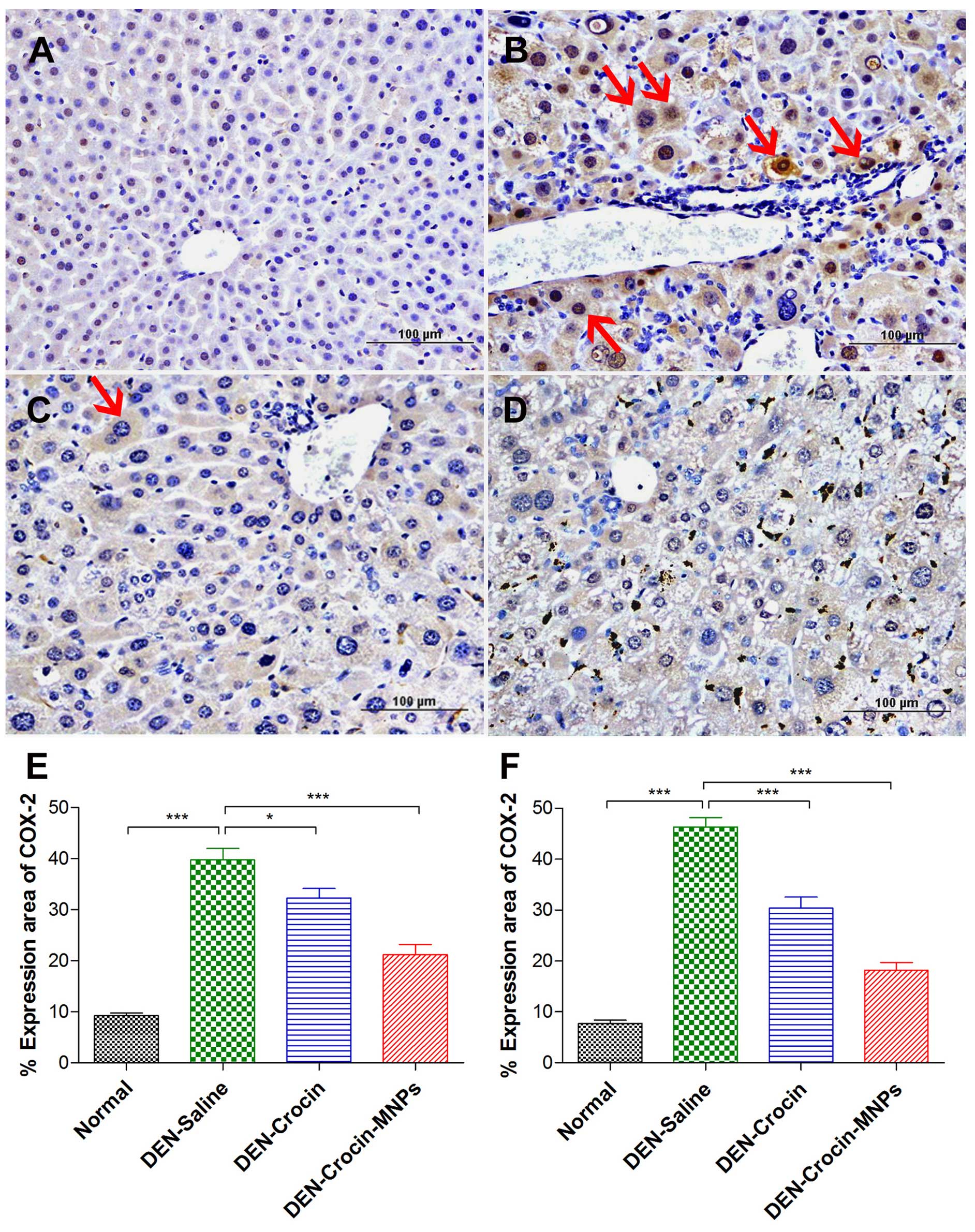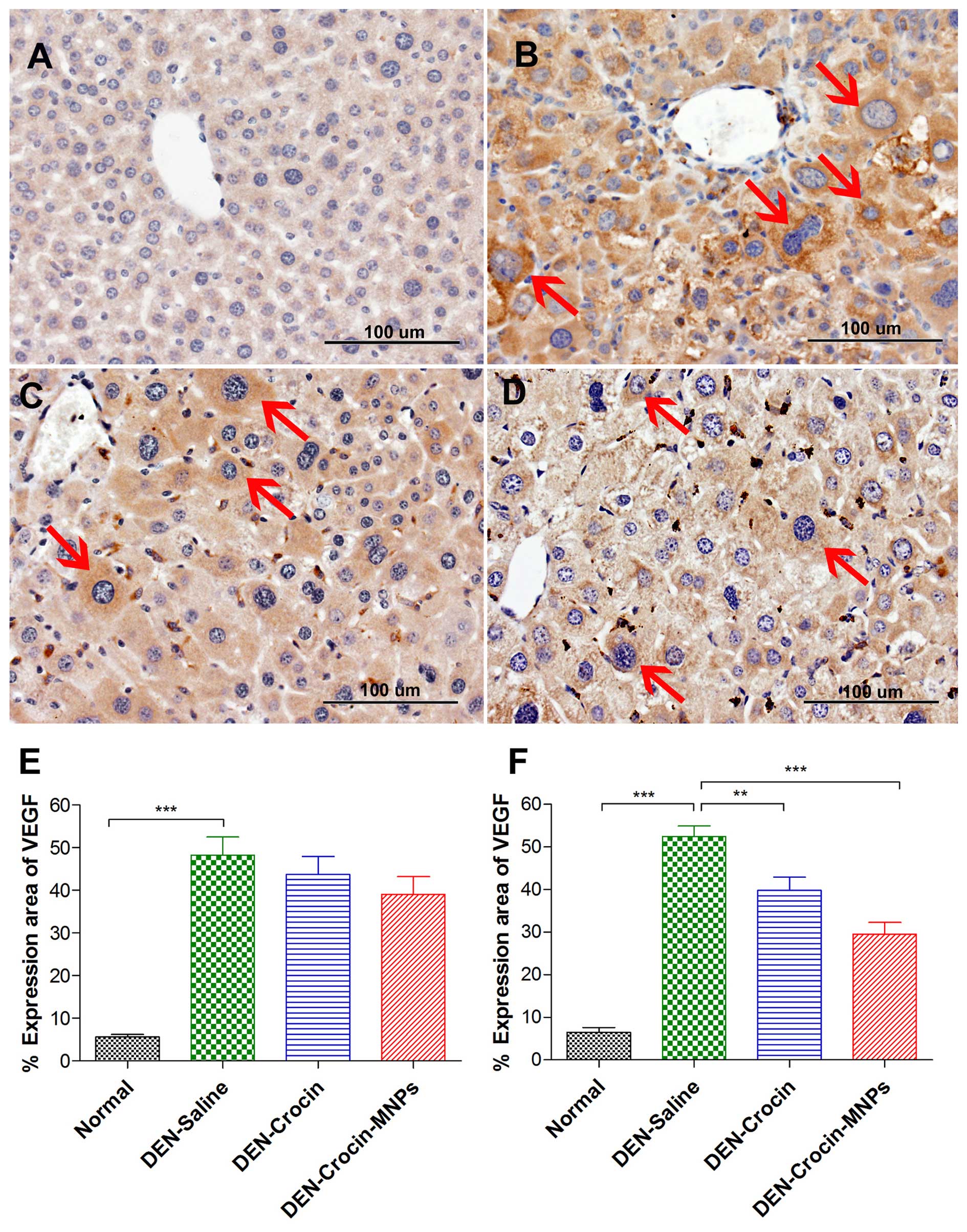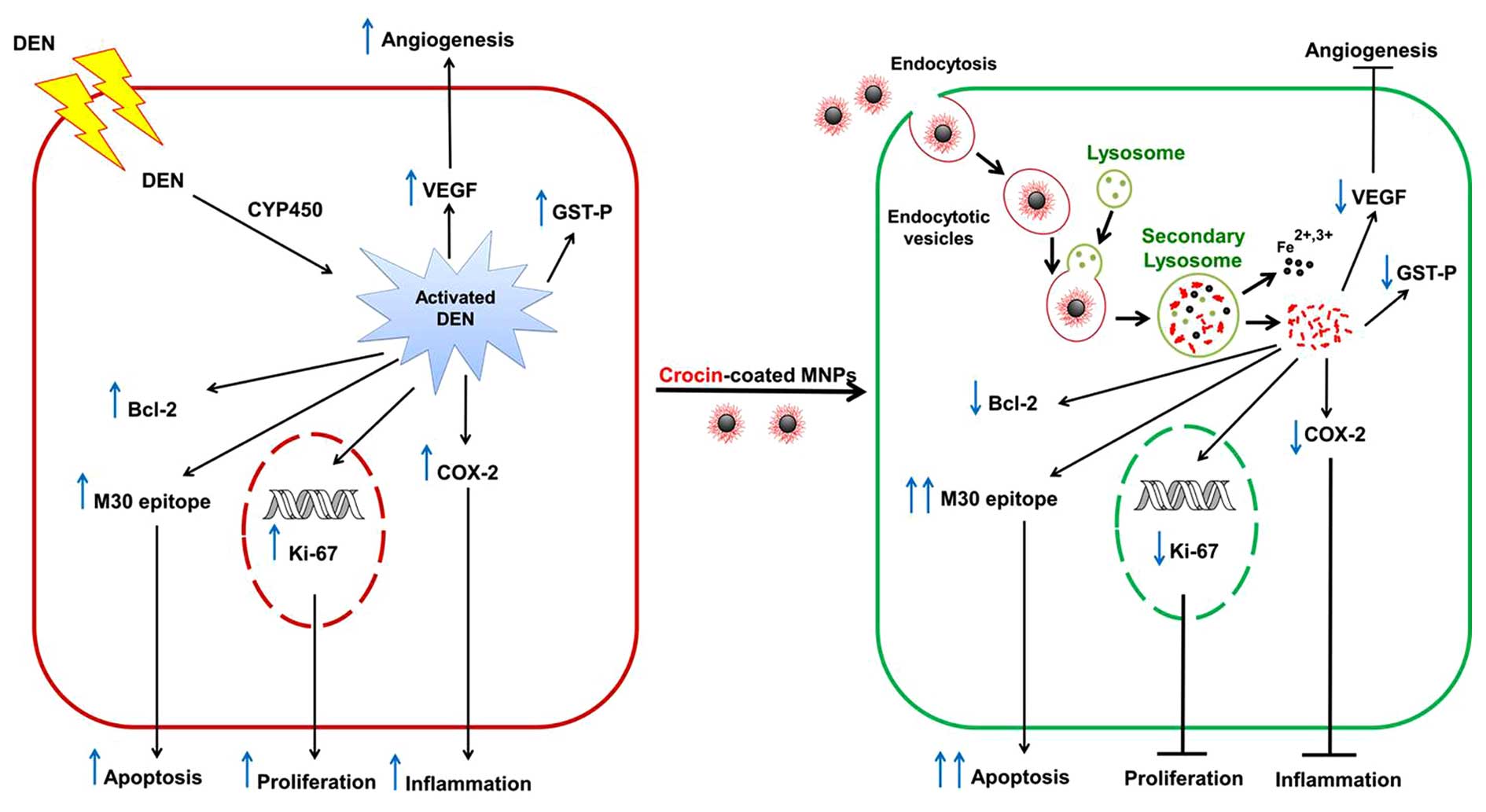|
1
|
Torre LA, Bray F, Siegel RL, Ferlay J,
Lortet-Tieulent J and Jemal A: Global cancer statistics, 2012. CA
Cancer J Clin. 65:87–108. 2015. View Article : Google Scholar : PubMed/NCBI
|
|
2
|
London W and McGlynn K: Liver cancer.
Cancer Epidemiology and Prevention. 3rd. Schottenfeld D and
Fraumeni JF: Oxford University Press; New York, NY: pp. 763–786.
2006, View Article : Google Scholar
|
|
3
|
Llovet JM, Ricci S, Mazzaferro V, Hilgard
P, Gane E, Blanc JF, de Oliveira AC, Santoro A, Raoul JL, Forner A,
et al SHARP Investigators Study Group: Sorafenib in advanced
hepatocellular carcinoma. N Engl J Med. 359:378–390. 2008.
View Article : Google Scholar : PubMed/NCBI
|
|
4
|
Tietze R, Zaloga J, Unterweger H, Lyer S,
Friedrich RP, Janko C, Pöttler M, Dürr S and Alexiou C: Magnetic
nanoparticle-based drug delivery for cancer therapy. Biochem
Biophys Res Commun. 468:463–470. 2015. View Article : Google Scholar : PubMed/NCBI
|
|
5
|
Block KI, Gyllenhaal C, Lowe L, Amedei A,
Amin AR, Amin A, Aquilano K, Arbiser J, Arreola A, Arzumanyan A, et
al: Designing a broad-spectrum integrative approach for cancer
prevention and treatment. Semin Cancer Biol. 35(Suppl): S276–S304.
2015. View Article : Google Scholar : PubMed/NCBI
|
|
6
|
Kianbakht S and Mozaffari K: Effects of
saffron and its active constituents, crocin and safranal on
prevention of indomethacin induced gastric ulcers in diabetic and
nondiabetic rats. J Med Plants. 8:30–38. 2009.
|
|
7
|
Amin A, Hamza AA, Bajbouj K, Ashraf SS and
Daoud S: Saffron: A potential candidate for a novel anticancer drug
against hepatocellular carcinoma. Hepatology. 54:857–867. 2011.
View Article : Google Scholar : PubMed/NCBI
|
|
8
|
Tamaddonfard E, Farshid AA, Eghdami K,
Samadi F and Erfanparast A: Comparison of the effects of crocin,
safranal and diclofenac on local inflammation and inflammatory pain
responses induced by carrageenan in rats. Pharmacol Rep.
65:1272–1280. 2013. View Article : Google Scholar
|
|
9
|
Khosrojerdi F and Kazemi Noureini S: Study
of telomerase activity in cell line MCF7 treated with crocin. Clin
Biochem. 44:S1132011. View Article : Google Scholar
|
|
10
|
Escribano J, Alonso GL, Coca-Prados M and
Fernández JA: Crocin, safranal and picrocrocin from saffron (Crocus
sativus L.) inhibit the growth of human cancer cells in vitro.
Cancer Lett. 100:23–30. 1996. View Article : Google Scholar : PubMed/NCBI
|
|
11
|
Singh A and Sahoo SK: Magnetic
nanoparticles: A novel platform for cancer theranostics. Drug
Discov Today. 19:474–481. 2014. View Article : Google Scholar
|
|
12
|
El-kharrag R, Amin A and Greish YE: Low
temperature synthesis of monolithic mesoporous magnetite
nanoparticles. Ceram Int. 38:627–634. 2012. View Article : Google Scholar
|
|
13
|
El-kharrag R, Amin A and Greish YE:
Synthesis and characterization of mesoporous sodium dodecyl
sulfate-coated magnetite nanoparticles. J Ceram Sci Tech.
2:203–210. 2011.
|
|
14
|
Sundar S, Mariappan R and Piraman S:
Synthesis and characterization of amine modified magnetite
nanoparticles as carriers of curcumin-anticancer drug. Powder
Technol. 266:321–328. 2014. View Article : Google Scholar
|
|
15
|
Mosmann T: Rapid colorimetric assay for
cellular growth and survival: Application to proliferation and
cytotoxicity assays. J Immunol Methods. 65:55–63. 1983. View Article : Google Scholar : PubMed/NCBI
|
|
16
|
Mejías R, Pérez-Yagüe S, Gutiérrez L,
Cabrera LI, Spada R, Acedo P, Serna CJ, Lázaro FJ, Villanueva A,
Morales MP, et al: Dimercaptosuccinic acid-coated magnetite
nanoparticles for magnetically guided in vivo delivery of
interferon gamma for cancer immunotherapy. Biomaterials.
32:2938–2952. 2011. View Article : Google Scholar : PubMed/NCBI
|
|
17
|
Dar RA, Brahaman PK, Tiwari S and Pitre
KS: Indirect electrochemical analysis of crocin in phytochemical
sample. E-J Chem. 9:918–925. 2012. View Article : Google Scholar
|
|
18
|
Kumar SR, Priyatharshni S, Babu VN,
Mangalaraj D, Viswanathan C, Kannan S and Ponpandian N: Quercetin
conjugated superparamagnetic magnetite nanoparticles for in-vitro
analysis of breast cancer cell lines for chemotherapy applications.
J Colloid Interface Sci. 436:234–242. 2014. View Article : Google Scholar : PubMed/NCBI
|
|
19
|
Dawidczyk CM, Kim C, Park JH, Russell LM,
Lee KH, Pomper MG and Searson PC: State-of-the-art in design rules
for drug delivery platforms: Lessons learned from FDA-approved
nanomedicines. J Control Release. 187:133–144. 2014. View Article : Google Scholar : PubMed/NCBI
|
|
20
|
Molday RS and MacKenzie D: Immunospecific
ferromagnetic iron-dextran reagents for the labeling and magnetic
separation of cells. J Immunol Methods. 52:353–367. 1982.
View Article : Google Scholar : PubMed/NCBI
|
|
21
|
Amin A, Bajbouj K, Koch A, Gandesiri M and
Schneider-Stock R: Defective autophagosome formation in p53-null
colorectal cancer reinforces crocin-induced apoptosis. Int J Mol
Sci. 16:1544–1561. 2015. View Article : Google Scholar : PubMed/NCBI
|
|
22
|
Aung HH, Wang CZ, Ni M, Fishbein A,
Mehendale SR, Xie JT, Shoyama CY and Yuan CS: Crocin from Crocus
sativus possesses significant anti-proliferation effects on human
colorectal cancer cells. Exp Oncol. 29:175–180. 2007.PubMed/NCBI
|
|
23
|
Veiseh O, Gunn JW and Zhang M: Design and
fabrication of magnetic nanoparticles for targeted drug delivery
and imaging. Adv Drug Deliv Rev. 62:284–304. 2010. View Article : Google Scholar :
|
|
24
|
Rumsby PC, Barrass NC, Phillimore HE and
Evans JG: Analysis of the Ha-ras oncogene in C3H/He mouse liver
tumours derived spontaneously or induced with diethylnitrosamine or
phenobarbitone. Carcinogenesis. 12:2331–2336. 1991. View Article : Google Scholar : PubMed/NCBI
|
|
25
|
He XY, Smith GJ, Enno A and Nicholson RC:
Short-term diethylnitrosamine-induced oval cell responses in three
strains of mice. Pathology. 26:154–160. 1994. View Article : Google Scholar : PubMed/NCBI
|
|
26
|
Nakatani T, Roy G, Fujimoto N, Asahara T
and Ito A: Sex hormone dependency of diethylnitrosamine-induced
liver tumors in mice and chemoprevention by leuprorelin. Jpn J
Cancer Res. 92:249–256. 2001. View Article : Google Scholar : PubMed/NCBI
|
|
27
|
Lowe SW and Lin AW: Apoptosis in cancer.
Carcinogenesis. 21:485–495. 2000. View Article : Google Scholar : PubMed/NCBI
|
|
28
|
Lee GH: Correlation between Bcl-2
expression and histopathology in diethylnitrosamine-induced mouse
hepatocellular tumors. Am J Pathol. 151:957–961. 1997.PubMed/NCBI
|
|
29
|
Satoh K, Kitahara A, Soma Y, Inaba Y,
Hatayama I and Sato K: Purification, induction, and distribution of
placental glutathione transferase: A new marker enzyme for
preneoplastic cells in the rat chemical hepatocarcinogenesis. Proc
Natl Acad Sci USA. 82:3964–3968. 1985. View Article : Google Scholar : PubMed/NCBI
|
|
30
|
Gallo O, Franchi A, Magnelli L, Sardi I,
Vannacci A, Boddi V, Chiarugi V and Masini E: Cyclooxygenase-2
pathway correlates with VEGF expression in head and neck cancer.
Implications for tumor angiogenesis and metastasis. Neoplasia.
3:53–61. 2001. View Article : Google Scholar : PubMed/NCBI
|
|
31
|
Tang TC, Poon RT, Lau CP, Xie D and Fan
ST: Tumor cyclooxygenase-2 levels correlate with tumor invasiveness
in human hepatocellular carcinoma. World J Gastroenterol.
11:1896–1902. 2005. View Article : Google Scholar : PubMed/NCBI
|
|
32
|
Sivaramakrishnan V and Niranjali Devaraj
S: Morin regulates the expression of NF-kappaB-p65, COX-2 and
matrix metalloproteinases in diethylnitrosamine induced rat
hepatocellular carcinoma. Chem Biol Interact. 180:353–359. 2009.
View Article : Google Scholar : PubMed/NCBI
|
|
33
|
Kawabata K, Tung NH, Shoyama Y, Sugie S,
Mori T and Tanaka T: Dietary crocin inhibits colitis and
colitis-associated colorectal carcinogenesis in male ICR mice. Evid
Based Complement Alternat Med. 2012:8204152012. View Article : Google Scholar
|
|
34
|
Lee SH, Jeong D, Han YS and Baek MJ:
Pivotal role of vascular endothelial growth factor pathway in tumor
angiogenesis. Ann Surg Treat Res. 89:1–8. 2015. View Article : Google Scholar : PubMed/NCBI
|
|
35
|
Maggi L, Carmona M, Zalacain A, Tomé MM,
Murcia MA and Alonso GL: Parabens as agents for improving crocetin
esters' shelf-life in aqueous saffron extracts. Molecules.
14:1160–1170. 2009. View Article : Google Scholar : PubMed/NCBI
|















